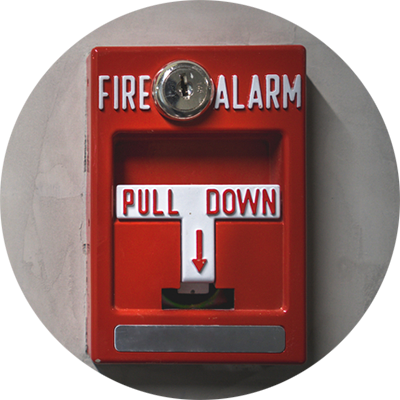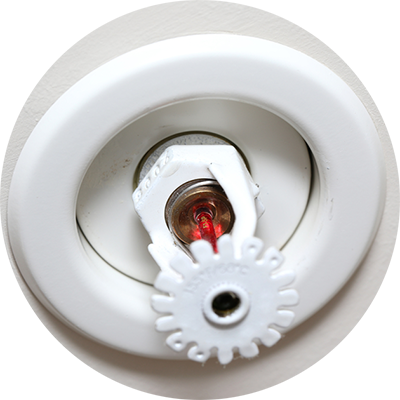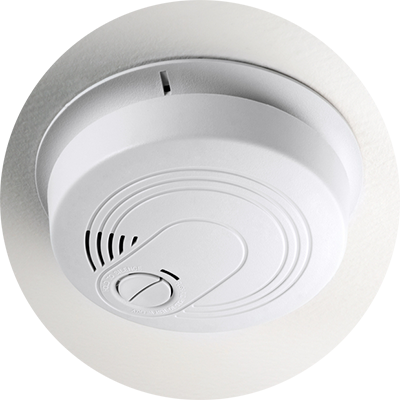Based on the information provided, we are observing this as an R-2 occupancy, with the applicable codes being the 2015 Virginia Uniform Statewide Building Code (USBC), which is based on the 2015 International Building Code (IBC), as well as the 2015 Virginia Statewide Fire Prevention Code (SFPC), which is based on the 2015 International Fire Code (IFC).
Our understanding is that the USBC is used for construction and alterations, and the SFPC is used to maintain the existing fire safety levels of the construction or alteration activities approved under the USBC.
Going over your questions:
1. “Do the individual unit smoke alarms need to call a remote monitoring agency?”
Although a building fire alarm system that activates an occupant notification system (horns, strobes, sounders, etc.) is required in taller apartment buildings such as this one by section 907.2.9 of the USBC, that fire alarm system is not expected to communicate with smoke alarms located in dwelling units.
While some occupancy types, such as hotels, require the smoke alarms to be ‘smoke detectors’ that integrate with both the building fire alarm system as well as an off-site monitoring agency, an R-2 only requires ‘single and multi-station smoke alarms’ in sec 907.2.9.2. This means that these devices only need to alert the occupants of the specific dwelling unit in which they are installed. The installation requirements for those dwelling-unit smoke alarms are found in section 907.2.11.
If it is desired to design the smoke detectors/alarms to integrate into the building-wide fire alarm system, the code does not oppose that—but it is not required for an R-2 occupancy. The building code also does not address or require a separate alarm panel for each unit.
It is important to note that all of the information above is focused on code design options and requirements. Sometimes, a special design—such as a separate panel in each unit or integration between a smoke alarm and a remote monitoring agency—is the result of unique, site-specific circumstances during the development of the building.
These 'alternate methods' are sometimes folded into the project design as an equivalency for some other aspect, such as a reduced fire rating for walls or ceilings or a unique egress concept that compelled the building designers or authorities to get creative. Thus, removing or reducing the existing protection devices and/or their capabilities may require the involvement of local authorities, a design professional, or both. Without knowing your specific circumstance or why each unit has detectors designed to individually notify an off-site monitoring agency, we can't comment on this possibility—but you should be aware of it before proceeding.
In section 901.4, the fire code (SFPC) does require that both required and nonrequired systems be maintained to function as originally installed.
2. Who has the responsibility for maintaining the in-unit alarm?
The responsibility for maintaining the in-unit alarms is handled very broadly in the code, but it is typically shouldered by the owner of the system or their designated representative.
In section 901.6, the fire code (SFPC) requires existing fire protection systems to be periodically maintained according to specific NFPA standards to ensure operational reliability. For fire alarm systems, section 901.6 of the SFPC sends you to NFPA 72 for the maintenance activities required on the system.
Section 14.2.3 of NFPA 72 requires that the “property, building, or system owner” be responsible for these activities. So, in your situation, the enforceable provisions of the code are written to accommodate a variety of scenarios, many of which may be policy- or contract-driven based on unique circumstances.
Additional considerations:
1. It appears that your situation may be unique and possibly the result of a creative or alternate design scenario when the building was built or remodeled, resulting in a system or set of systems that have performance objectives driven by unknown circumstances. If it is desired to modify or reduce what these systems do and/or delegate maintenance responsibilities to new parties or stakeholders, we would advise that all parties discuss the matter, and also consult your insurance provider(s) and any local building and fire officials.
2. Some networked smoke/heat detectors in individual residences are offered by various security system and monitoring providers (e.g., ADT, Ring, etc.). If this describes your situation, then the maintenance requirements are a bit different (far simpler) than those intended for dedicated fire alarm control panels in NFPA 72, and they are generally dictated by the manufacturer/provider.
Here are the various code references:
Virginia Building Code (USBC) 2015:
[F] 907.2.9 Group R-2
Fire alarm systems and smoke alarms shall be installed in Group R-2 occupancies as required in Sections 907.2.9.1 through 907.2.9.3.
[F] 907.2.9.1 Manual Fire Alarm System
A manual fire alarm system that activates the occupant notification system in accordance with Section 907.5 shall be installed in Group R-2 occupancies where any of the following conditions apply:
- Any dwelling unit or sleeping unit is located three or more stories above the lowest level of exit discharge.
- Any dwelling unit or sleeping unit is located more than one story below the highest level of exit discharge of exits serving the dwelling unit or sleeping unit.
- The building contains more than 16 dwelling units or sleeping units.
[F] 907.2.9.2 Smoke Alarms
Single- and multiple-station smoke alarms shall be installed in accordance with Section 907.2.11.
[F] 907.2.11 Single- And Multiple-Station Smoke Alarms
Listed single- and multiple-station smoke alarms complying with UL 217 shall be installed in accordance with Sections 907.2.11.1 through 907.2.11.6 and NFPA 72.
Virginia Fire Code (SFPC) 2015
901.4 Maintenance and Alterations
Fire protection systems shall be maintained in accordance with the original installation standards for that system. Alterations and repairs to fire protection systems shall be done in accordance with the applicable building code and the applicable standards.
901.4.1 Required Fire Protection Systems
Fire protection systems shall be repaired, operated, tested and maintained in accordance with this code. A fire protection system for which a design option, exception or reduction to the provisions of this code or the applicable Building Code has been granted shall be considered to be a required system.
901.4.2 Nonrequired Fire Protection Systems
Nonrequired fire protection systems shall be maintained to function as originally installed. If any such systems are to be reduced in function or discontinued, approval shall be obtained from the building official in accordance with Section 103.8.1 of Part I of the USBC.
NFPA 72, 2013
14.2.3 Responsibilities.
14.2.3.1 * The property or building or system owner or the owner's designated representative shall be responsible for inspection, testing, and maintenance of the system and for alterations or additions to this system.
14.2.3.2 Where the property owner is not the occupant, the property owner shall be permitted to delegate the authority and responsibility for inspecting, testing, and maintaining the fire protection systems to the occupant, management firm, or managing individual through specific provisions in the lease, written use agreement, or management contract.
14.2.3.3 Inspection, testing, or maintenance shall be permitted to be done by the building or system owner or a person or organization other than the building or system owner if conducted under a written contract.
14.2.3.4 Where the building or system owner has delegated any responsibilities for inspection, testing, or maintenance, a copy of the written delegation required by 14.2.3.3 shall be provided to the authority having jurisdiction upon request.











